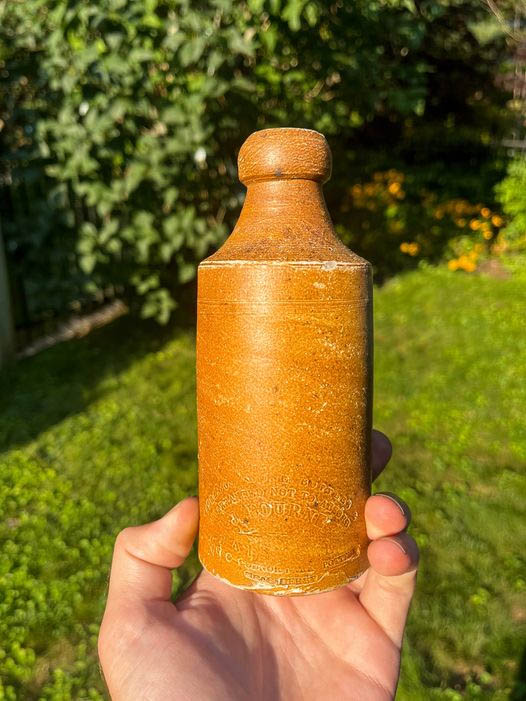“I don’t often come across bottles like this snorkelling or diving. The inscription was faded but after I put a few key words in Google, it lead to a blog post from 2012 where this information was shown: “Vitreous Stone Bottles, Warranted Not to Absorb, J. Bourne Patentee, Denby & Codnor Park Potteries Near Derby,” and was made in Derbyshire between 1833 and 1850.
William Bourne founded the pottery in 1806 after discovering quality clay in Derbyshire, with his son Joseph later running the business. The “J. Bourne & Son” mark began around 1850.
These bottles were made from coarse, heat-resistant clay, fired to become hard and non-absorbent. Salt glazing, a process where salt fused with the pottery’s surface, gave the bottles their shiny finish. This patented technique is stamped below the J. Bourne & Son name.“
Vitreous stone: what is it?
The name “vitrous” is derived from the Latin word “vitrum,” which means “glass.” Similar to glass, stones with a vitreous lustre reflect light.
What is used to make vitreous glass?
The glaze on porcelain pottery is a more complicated material that contains Al, K, Ca, and Na oxides (up to 30%) in addition to silica. Vitreous silica is a glass that is almost entirely composed of SiO2, with some Na, Al, Fe, Mg, and Ti oxide impurities.
In addition to being more resilient than glass, stoneware bottles from the 19th century had the advantage of maintaining a constant temperature for their contents. High temperatures during the firing process vitrify the material, resulting in a watertight vessel. It follows that the bottle was most likely used for a beverage of some type.
After some research, it appears some of these bottles are available for purchase on Etsy.
Follow Saltwater Sean on Facebook, Twitter, Instagram and YouTube for his never-ending cleanups on the waterways in Nova Scotia.







